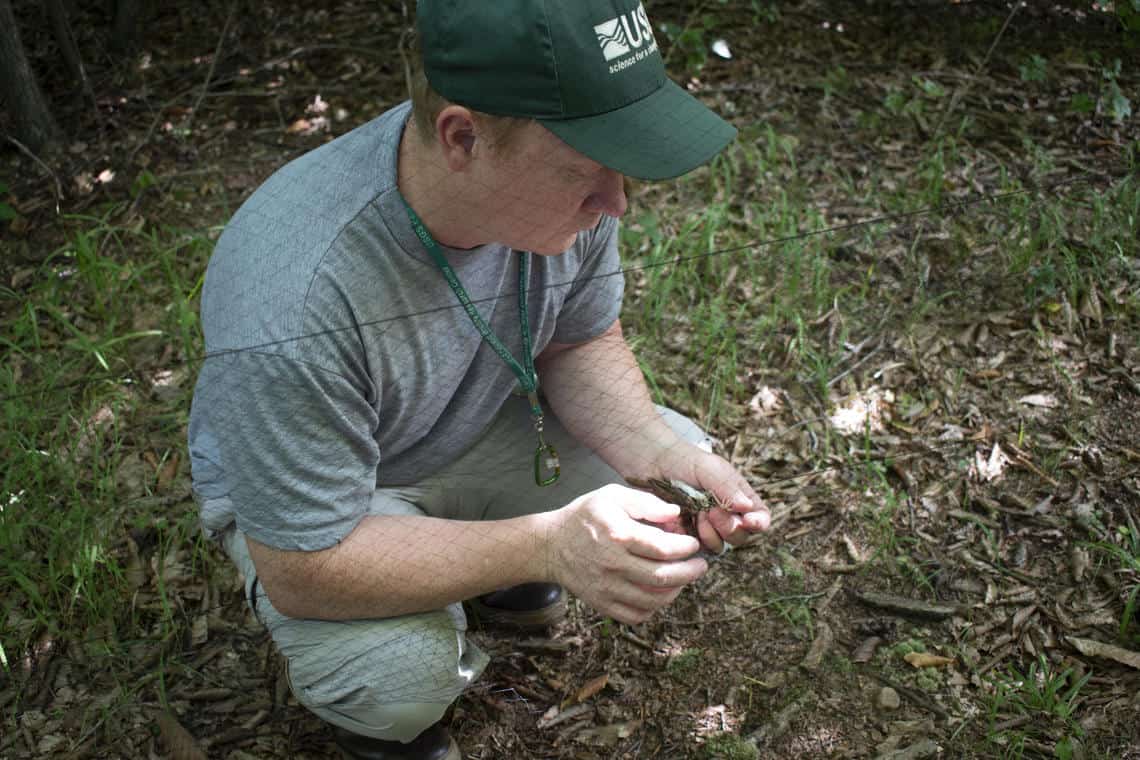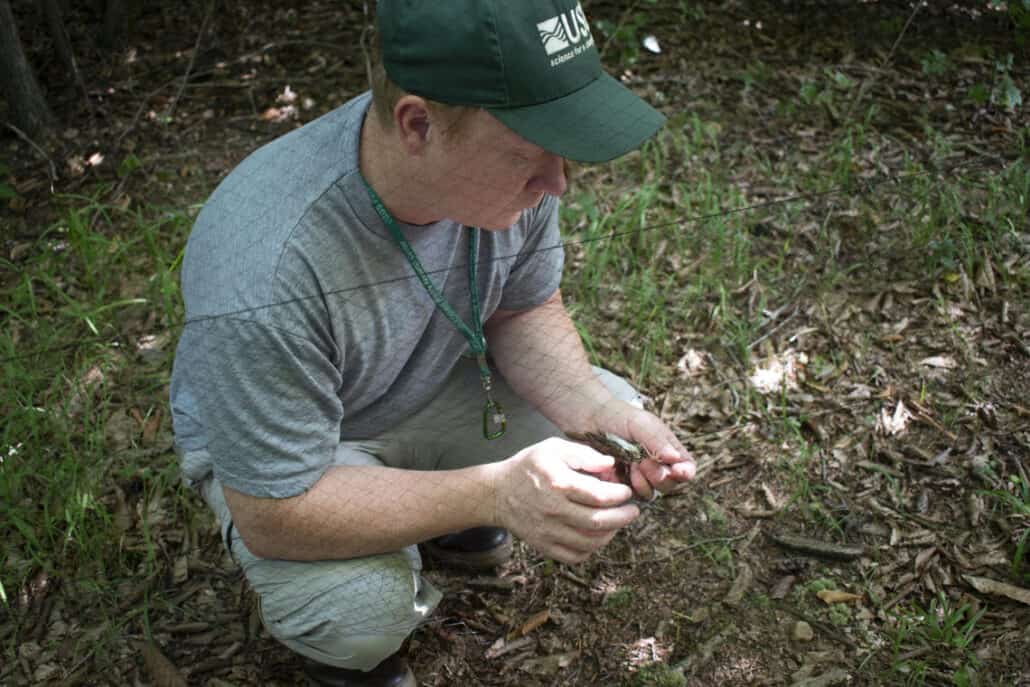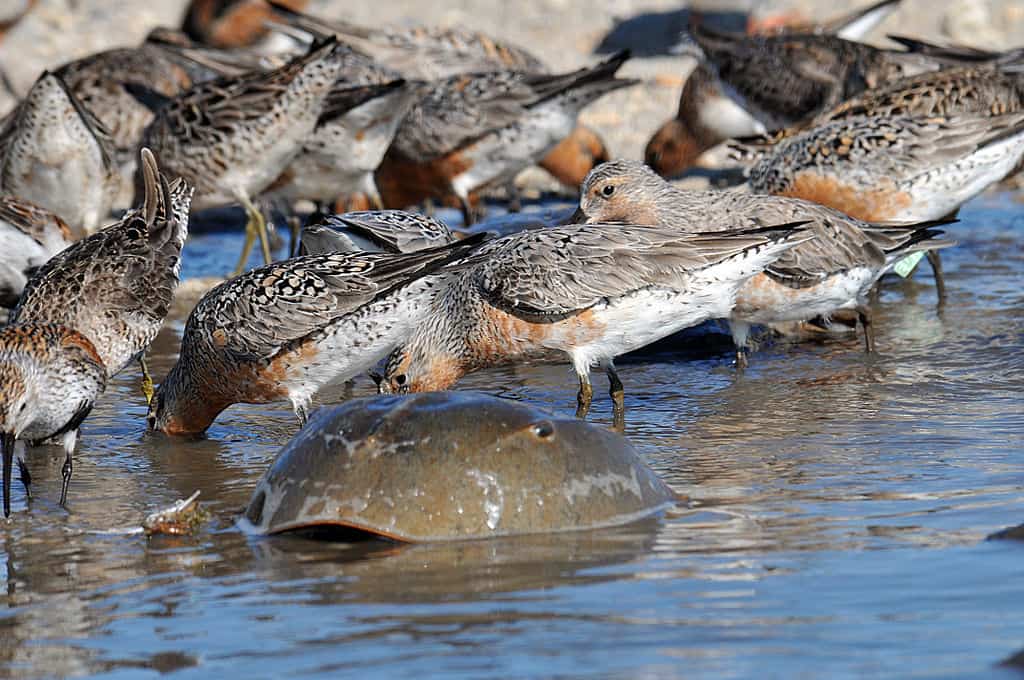
John James Audubon was the first to tag a bird. In 1804, he affixed a thin, silver band to the legs of eastern phoebes that were nesting on his property. Audubon was curious about nest-site fidelity. The following year, the phoebes—leg bands intact—returned to nest on his property. Audubon was brilliant, but I doubt that he could have imagined that someday, hundreds of thousands of birds would be banded around the world each year, their unique band numbers recorded and shared, available for understanding the migration and nesting habits of thousands of species.
This year marks 100 years that bird banding has been conducted in a systematic, scientific, and coordinated method. Congratulations to the USGS Bird Banding Laboratory, housed at the Patuxent Wildlife Research Center in Laurel, Maryland, for a century of important research on birds, which encourages and facilitates avian conservation.
The lab issues permits for bird banding in the United States, and distributes about a million aluminum leg bands per year to scientists in the U.S. and Canada. It also maintains the database for banding records for both countries.

Just like Audubon discovered 200 years ago, leg bands allow observers to recognize individual birds. By numbering the bands, and sometimes accompanying the aluminum bands with colored bands, and then recording details about the bird, scientists can keep track of the bird’s location, age, gender, mortality, and more, each time the bird is spotted or recaptured, or otherwise found. Scientists and non-scientists alike can report sightings or other encounters with banded birds to the lab, which presently manages 77 million band records and 5 million encounter records. About 1.2 million bands are fitted each year, and about 100,000 encounter reports are submitted.
Banding is undertaken with the utmost care for the bird’s safety and well-being. There is scant evidence that being banded or wearing a band causes short-term or long-term harm to birds. On the contrary: The information and understanding that bird banding has provided has helped birds by demonstrating the importance of habitat protection.

“Scientists can tap this powerful archive of bird sighting information and combine it with other research tools to track birds’ behavior, migration, lifespans, populations, diseases and levels of environmental contaminants,” said Antonio Celis-Murillo, Acting Chief of the USGS Bird Banding Laboratory. “The archived information helps experts make important management and conservation decisions, which is especially important for the protection and recovery of endangered and threatened birds.”
“In the 100 years since the Bird Banding Laboratory was established, scientists have acquired an immense amount of data on the changing status and trends in bird populations, and they have documented movement patterns across the North America,” said Thomas O’Connell, center director for the USGS Patuxent Wildlife Research Center and Leetown Science Center. “Having long-term records is essential to seeing changes over time and learning about the state of the environment. The more we know about birds the better equipped land- and resource managers are to make the best decisions to protect them.”
For more information on the USGS Bird Banding Laboratory, including some of the revelations banding has revealed about wild birds, visit the USGS website »
Kudos to the lab for 100 years of contributions to our understanding and protection of the wild birds of North America.




